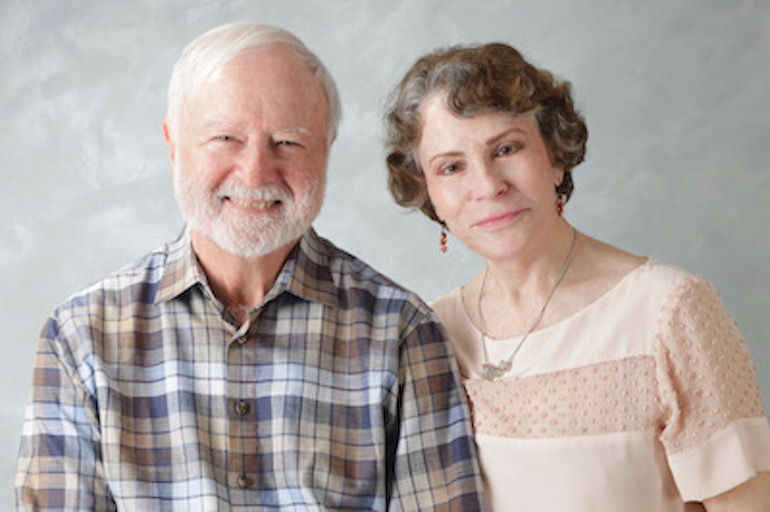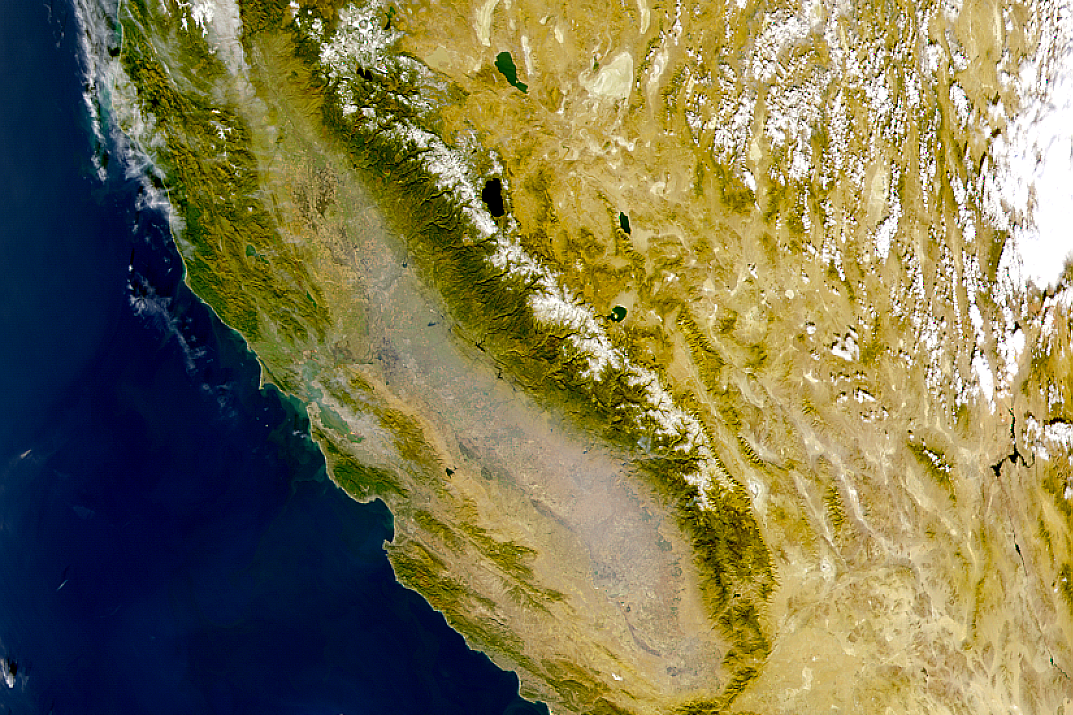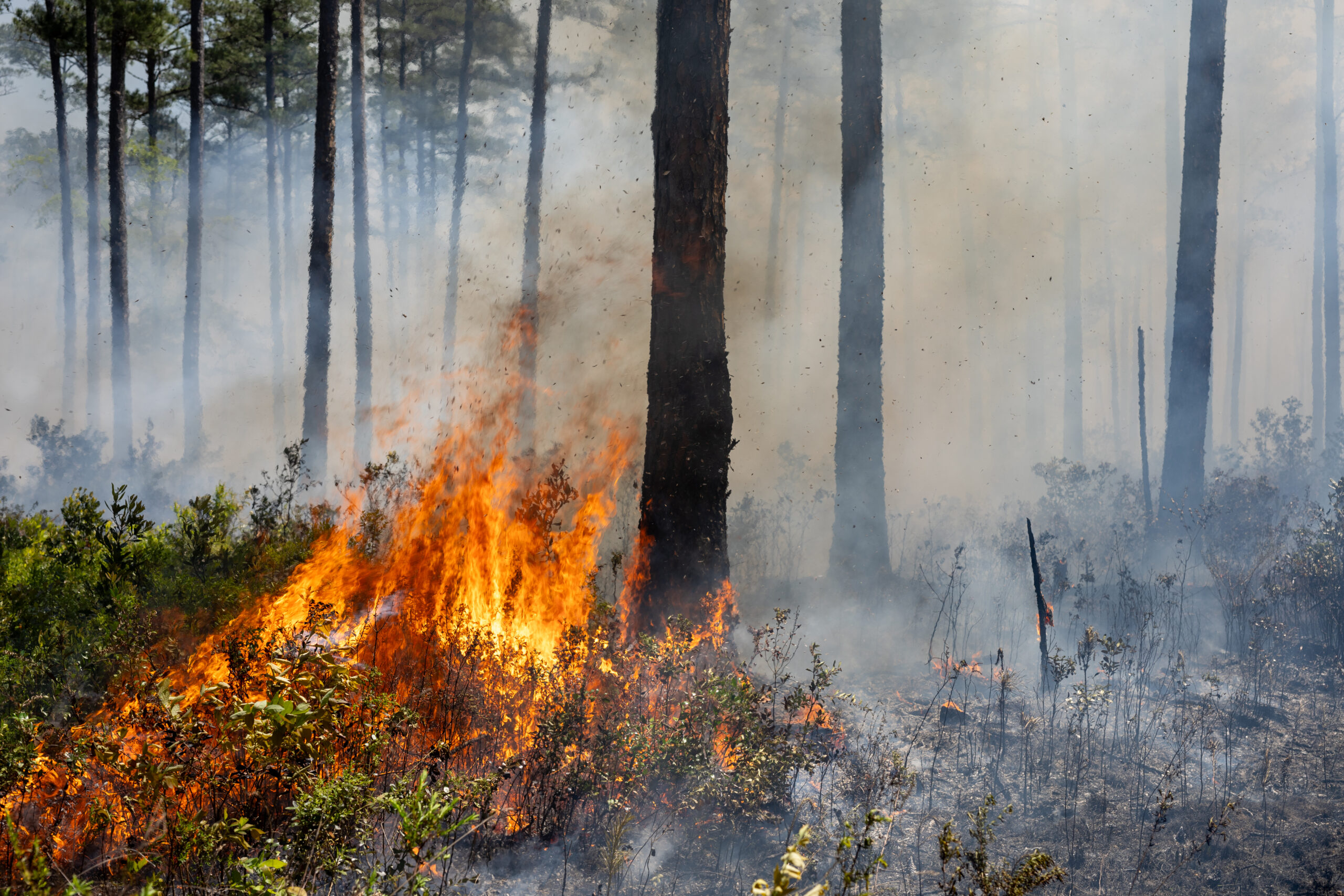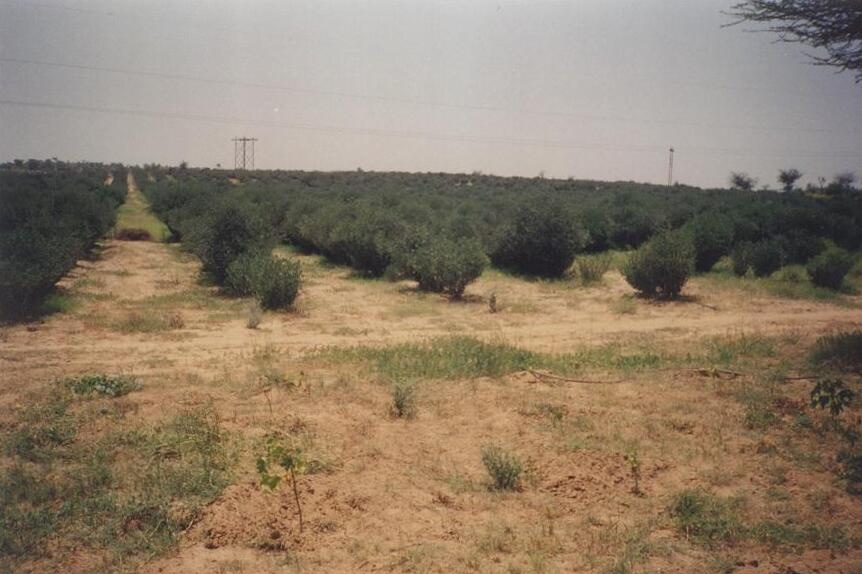BAERI’s Emma Yates is part of a small group of research scientists who look at…
How to Build a Research Institute, in 30 Short Years
In this special episode of our podcast For the Love of Science, we hear the story of BAERI’s founding from the founders themselves: Robert Bergstrom and Sharon Sittloh.
Listen here or on Apple Podcasts, Audible, Spotify, or Google Podcasts.

Robert Bergstrom and Sharon Sittloh, BAERI’s co-founders and husband-and-wife team. Image: Jay Daniel / Black Cat Studio
This transcript has been lightly edited for clarity.
Erin Bregman: This is For the Love of Science, a podcast from the Bay Area Environmental Research Institute.
Danielle Levin: Very official, Erin.
Erin: Thank you, Danielle. We’re also called BAERI, that’s the less official name. And even less official than that is BAER.
Danielle: I’m Danielle Levin.
Erin: And I’m Erin Bregman. And in this show, we get to talk to institute scientists, engineers, and mission specialists about whatever research they’re doing right now…
Danielle: …in the things that we specialize in, which are the Earth, environmental and space sciences, and we learn about what their work can teach us about the planet and our universe. We are the communications team of BAERI, and we’re delighted to bring this podcast to you. In this particular episode, we’re starting out our new series called 30 Years, 30 Stories.
Erin: I’m really excited about it. It’s a collection of written and audio pieces that talk about some of the work that’s happened at BAERI over the last 30 years. Some of them are going to be really big stories. Some of them are going to be really small stories. Some of them will be on this podcast, and some of them will just be written, and they’ll show up on our website and our Medium publication. The first one that’s going to come out is actually about the Quantum Chemistry Lab, written by Rachel Sender, which is just a fascinating project. I hope you go check it out and give it a read.
Danielle: So for this particular one, Erin is going to talk with our co-founders, Robert, who tends to go by Bob, Bergstrom, and Sharon Sittloh. They happen to be married also, and they’re going to talk about the path that eventually led to the founding of BAERI 30 years ago.
Erin: And, spoiler alert, it was definitely not on purpose that they started an institute that has become as big as it is today.
Danielle: And cats feature prominently.
Erin: In the post script. Stay tuned beyond the end credits for a fun story that’s either the most romantic or the most unromantic story of how two people ended up married.
Danielle: I vote for romantic.
Erin: Oh, the last thing I’ll add before we start is I wasn’t able to talk to Bob and Sharon together because they were in the middle of moving. So I caught Bob on Zoom during a busy work day, and I met Sharon in the parking lot outside of a Starbucks in Mill Valley in California.
Danielle: Good old Starbucks. Good for more than just bathrooms.
Erin: Here’s Sharon. She’s the co founder of BAERI:
Sharon Sittloh: But I did theater for many, many, many years.
Erin: That’s my background.
Sharon: Really? Stage?
Erin: Yeah, I’m a playwright. Yeah.
Sharon: Wow. Well, I did it for 50 years.
Erin: Really! I had no idea.
Erin: And Bob Bergstrom:
Bob Bergstrom: I’m the founder, or one of the founders, and the president of the Bay Area Environmental Research Institute.
Erin: Do you usually call it BAER or BAERI or BAER Institute? What’s your go to?
Bob: That’s a long story.
Erin: About 50 years ago, a little bit more than 50 years ago, Bob and Sharon are students at Purdue University.
Danielle: And what were they studying?
Erin: Two very different things. Sharon was studying art history and fine arts painting, and Bob was working on a PhD in mechanical engineering.
Danielle: Mechanical engineering? But BAERI does Earth and space science. How did he make that leap?
Erin: Yeah, I mean, the interesting thing is his engineering PhD was connected to atmospheric chemistry, and so he was looking at something connected to how small black carbon particles are impacting the temperature on Earth, like the global temperature, not just weather, because it really wasn’t understood at the time. And it turns out that that’s also an engineering problem as much as it is anything else.
Danielle: It’s quite a… It feels a little prescient for where we are today.
Erin: Yeah. In fact, he mentioned one time, not in this interview, but in a previous interview conversation with me, that his idea for his PhD thesis came from his advisor on the first Earth Day in 1970. His advisor was like, ‘Hey, you’re interested in the environment. This paper just came out where they’re saying that, you know, these carbon particles are having this impact on Earth’s climate.’ And Bob looked at it and was like, ‘Hmm, I think we can do better than that.’ And he went off to do a model and that kind of started his research career.
Bob: Engineering people would look at me kind of crosswise and say, you know, ‘why did you do that for a PhD?’ And I just thought it was something I was interested in.
Danielle: So, he got his PhD. Then what happened?
Erin: And then like most PhDs, he applied for a postdoc, and he got a postdoc in Germany. So they went off to Mainz, Germany for a year.
Danielle: He and Sharon together.
Sharon: Very interesting because I’d never been out of the country. He hadn’t either, I don’t think, actually. But I’d never hardly been out of Indiana.
Erin: Is that where you grew up?
Sharon: Yeah. We could have stayed. We could have actually gone to Russia. But I didn’t want to. I wanted to go back because at the time women weren’t treated… Germany and Europe were even a little more repressive for women than it even was in the United States, you know, 50 years ago.
Erin: And then they came back to the US and ended up in California at NASA Ames, which is in Silicon Valley. Moffett Field. It’s where BAERI is now, Building 18. That’s where you can find us.
Danielle: That’s where you can find us.
Sharon: Then the research kind of dried up in the sense that it was the Reagan era when all of the civil servants were… You couldn’t get a civil servant job. So he decided to go with a place in San Rafael, which was still science oriented. But then when he’d been there a few years, he thought, well, he’d go back to law school because nothing was happening in the science field fast enough. So he thought, well, maybe I could do better in law to make changes in society. So he went to Stanford Law School. I got my master’s degree in theater at San Francisco State. He practiced, he was in a big law firm in San Francisco for about a year, a year and a half. But of course, they tried to kill him. The law is a profession… When you get to that level with a big law firm, I mean, they work you to death. So that was not a long-term solution. And so then he went with the EPA thinking, okay, policy enforcement law, maybe I could make a change there. Well, it wasn’t, it wasn’t so easy either. So he thought, well, what if I went back into science? And he did.
Bob: I would really spend my time looking around to see what, you know, what opportunities there were to see if I could find something that I wanted to do. There were some number of other things that I suggested and they said, ‘No, we don’t do that at Ames.’ And I said, ‘Well, how about the stuff that I used to do?’ You know, which is optical properties of a little black carbon particles. ‘Has it done anything since I left?’ He said, ‘Well, no. Since you left, it’s actually gotten worse. Nobody’s done anything.’ And I thought, all right, let’s, let’s try that.
Danielle: So Bob says it was getting worse. What does he mean by that?
Erin: He means that since he left the field of research, no one else had picked the question back up again, and it had just sort of sat there not being looked at.
Danielle: Ready for him to pick it right back up again.
Erin: Exactly.
Danielle: So he’s back at Ames?
Erin: Yes.
Danielle: How does BAERI start to figure into it?
Erin: Okay, that’s a good question, and this gets kind of complicated. So the best way I can explain it is you and I come from the theater world, right?
Danielle: Mmhmm.
Erin: And you know how when you’re an individual artist and you get a grant, unless it’s a really easy to work with granting organization, a lot of times you cannot just take that grant money and stick it in your bank account, right?
Danielle: That’s right. Yeah. Tax implications and all of that stuff.
Erin: Right, right. So it’s the same thing for a research scientist. If they get a grant to do their research, they can’t just take that money and stick it in their bank account. They often have to send it through a university or a nonprofit.
Danielle: And Sharon figured in at this point in what way?
Erin: The whole thing was her idea.
Sharon: And I said, ‘Well, why not form a nonprofit?’ I mean, he was a lawyer. He could figure that out.
Bob: Well, I knew how to do corporations because I had worked with a guy who published a book with Nolo Press on how to do your own corporation.
Sharon: So we did. We formed a nonprofit. We didn’t know what to call it. We thought well, we’re in the Bay Area. We’re pretty sure we’re going to stay here. Environmental stuff. That’s what his law was in and that is what his PhD was in, basically. And so, environmental research. Yeah. What would you call it? What else was it? So we looked at all the other things that were out there and said, well, let’s just hope it can be an institute. You know, idealistically it would grow and we would be an institute. But we had no idea. I mean, we were really naive.
Bob: We said, ‘okay, we have to have a board meeting.’ They said, ‘Well, okay, what do we do?’ I said, ‘I don’t know.’
Sharon: We had our first board meeting at Mama’s in San Francisco over omelets. It was right across from Grace Cathedral. Well, it was very informal, obviously.
Bob: Since I was initially the, you know, the only employee, Sharon did a lot of the other work, and she got a friend of hers, Marion Williams, to help her with the accounting.
Sharon: I mean, it was simple. It was very simple, but I really didn’t know anything. And I took a night class at Golden Gate in accounting. And then Marion Williams, who eventually became the CEO of BAER, taught me the basics. And so, you know, I struggled through it. But then more people started coming because Bob started talking about how he was putting his money from NASA through, you know, the grant, through this, our little nonprofit.
Bob: And then the same guy who funded me, he had about five graduate students. And so he said, ‘well, you know, we did it for you. Why don’t you go take these guys?’ And I go, ’hmm, why do I want to do this?’ It turned out back then that a company of one person, or you had a small group, it was very difficult to get health insurance. And so we had five or six, and it was just enough to push us into a category where we could get a group health care plan.
Sharon: And more and more people started coming and, you know, and then it started getting really complicated and I thought, nah, I can’t do this. I’m not going to be good at this and we need to get somebody else.
Erin: So Sharon stepped down from what her role had been at BAERI.
Danielle: The founder steps down! And then who took over her responsibilities?
Erin: You remember Marion Williams, who had helped her in the beginning learn how to do the accounting? She handed it over to her. And Marion Williams actually became the CEO of BAERI.
Bob: At some point, the administration of the company in terms of, not really persona, but just the policies and dealing with Ames and stuff like that, became important. I couldn’t do all of that and be a scientist also. So at some point I started doing less science and more administrative stuff.
Sharon: Government is a bureaucracy. There’s just no getting around that. And it’s not always easy to work in a bureaucracy and people fall through the cracks. They’re not always in your best… looking in the employees best interest. I think BAER, mainly Bob, said, ‘you know, we’re going to treat people right.’ And so he did. And I think he still maintains that to this day. He tries to. It gets harder the bigger you get.
Bob: When you have a whole lot of employees, particularly when you don’t know them, you can get people who, for a variety of reasons, are difficult to deal with. And so you need to implement some kinds of checks. You have to set up more structure. It’s hard to figure out how to do that without, you know, sort of stifling, making people think that we’re becoming bureaucratic. And I mean, it’s not like… It’s not like “the good old days,” and blah, blah, blah. But it was a lot, a lot simpler back then. And now it’s not quite so simple.
Sharon: We had no illusions that it would ever really be as big as it is today. I’m as surprised as anybody, honestly, I don’t think Bob was… No, he didn’t know either. It was just like…a fluke.
Erin: Do you have a typical day now or what kinds of things make up your typical work day?
Bob: The typical day is talking or communicating with people to make sure they have what they need to get stuff done, and things are moving along. You know, it’s like, again, with 150 people, you can’t check in with everybody. [cell phone chirps in background] Okaaay! I’ve got to take this one, too. All right. All right. [Bob answers phone] Hey, my phone was right, it said Florian! Hey. Okay. Yeah. All right. What’s up?
Erin: Thank you to Bob Bergstrom and Sharon Sittloh.
Danielle: Our music is by Danny Clay.
Erin: If you want to read and listen to more episodes and stories from this series, Danielle, where should people go?
Danielle: You can go to a number of places. The first place to go is our Medium page, which you can find under our organization name: Bay Area Environmental Research Institute. Where else, Erin?
Erin: You can go to baeri.org and sign up for our newsletter—all of the stories will go straight to your inbox that way, or you can follow us on LinkedIn.
Danielle: Okay. And these stories will be coming out over the course of the next year. So you won’t find all of them right away, but they’ll be peppering the page as we go along. We’ll leave you with one more story.
Erin: As promised, it starts with a cat.
Sharon: So we had this cat. And the cat needed a home. And so it was hard to find places to live. So we thought, well, if we got married, we could live in student housing. It’d be cheaper, and the cat could live with us. So that’s what we did, that’s why we got married. It was like, okay, we’ll give this cat a home.
Bob: We didn’t tell our parents, which was I think they were mortified by. But a friend of ours bought champagne. And then we had seven or eight of us and we had champagne after the ceremony, went went home and watched creature features, and fell asleep on the floor.
Sharon: Well, you know, we were kind of the outliers in the sense that we…the thing of getting married and till death do you part and all that stuff, we rolled our eyes and said, okay, we don’t want to do that way. You know, you got to leave yourself an opening in your life, because you don’t know how it’s going to go.



